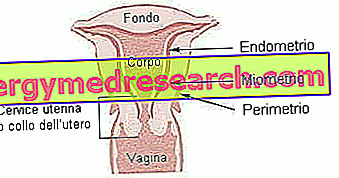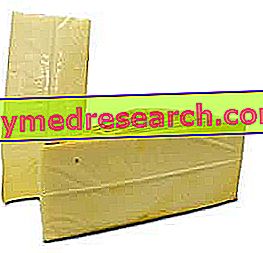The hair follicle is an epidermal formation, sunk in the dermis, consisting of the hair and its sheaths.
The formation of hair follicles is very early, so much so that they begin to appear around the second month of gestation. These follicles will continue to form throughout the pregnancy; at the time of birth the child will have all the equipment of follicles of which he has been genetically endowed and from this moment onwards no others will be formed.
The hair follicle sinks into the skin with a certain inclination, which is why our hairs are normally not straight, but slightly inclined.
The part that emerges from the skin is called a rod or hair shaft. The portion that sinks into the skin is called the root and is surrounded by several sheaths.
Behind the sebaceous gland, which pours its contents into the hair follicle, there is a small muscle, called the erector of the hair. This bundle of muscle fibers is inserted on one side into the follicle and on the other into the more superficial (adventitial) dermis, where it continues to fan out. The erector muscle is activated in response to cold, or following a feeling of fear. By contracting, it raises the shaft of the hair, making the skin around the follicle also wrinkle, which rises visibly giving rise to the so-called "goose bumps".

The lower part of the follicle, slightly enlarged, is called a bulb. Inside it is present the hair, wrapped by the internal epithelial sheath, in turn surrounded by the external epithelial sheath. Everything is wrapped in a sort of connective-type membrane, that is formed by fibers.
It should be noted that the bulb at the bottom is structured in such a way as to accommodate the so-called dermal papilla, a highly vascularized structure that provides the elements essential to its activity.
Each hair is also surrounded by a rich nervous innervation.
The axis of the hair has a diameter of about 70-100 μm and is formed by three contiguous layers, called, from the inside to the outside, marrow, bark and cuticle.
The marrow, absent in the thinnest hairs, is made up of particularly large cells and with large interstitial air spaces filled with air (which can influence the color of the hair itself).
The cortex is the main part and is formed by several layers of dead cells (without nucleus and organelles) and flattened, similar to those present in the stratum corneum of the epidermis. These cells are also pigmented, due to the presence of melanocytes located in the bulb.
Finally, the outermost portion, called cuticle, is made up of a single layer of cells, very thin and transparent (because they have no pigment). These cells are arranged in an imbricate way, rather like the tiles of a roof, and are intended to protect the underlying bark. Under the microscope they appear as small flakes, whose free edge is facing outwards. In the root of the hair, even the innermost layer of the follicle has cells arranged in an embryonic way, but in the opposite way, that is with the free edge facing downwards. Thanks to this anatomical peculiarity, the cells of the cuticle fit together with those of the follicle wall, improving the anchoring of the hair inside it.
The cells of the lower part of the bulb, which surround the dermal papilla, are called hair matrix cells. These are groups of undifferentiated cells, able to divide actively by mitosis. The new cells that originate from this division detach, participating in the formation of the three layers of the hair or of the internal epithelial sheath, in turn composed of three layers.
The bulb contains several groups of cells specialized in the germination and proliferation of the hair.
The internal epithelial sheath has the function of conforming the axis of the hair, that is, of forming a kind of rigid case within which the hair grows and lengthens. This rigidity is given by the presence of keratin.
The external epithelial sheath is formed by the epidermis, which sinks into the dermis like a glove finger, and is therefore made up of several layers of cells with a supporting function.
Even more externally, the connective membrane is made up of collagen fibers (which give a certain strength to the follicle); it also has a supporting function and contains both vessels and nerves.
Hair and hair »



